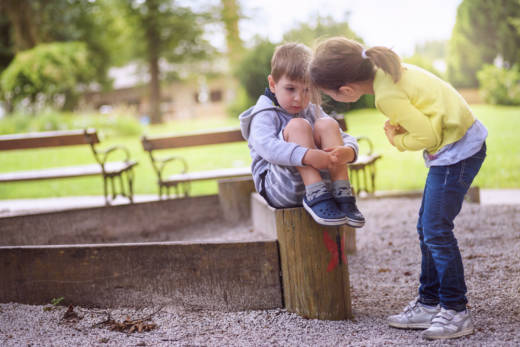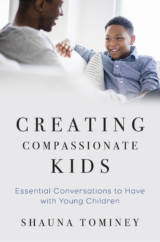Excerpted from Creating Compassionate Kids: Essential Conversations to Have with Young Children © 2019 by Shauna Tominey. The following is from Chapter 5: “You Can Be a Helper.” Used with the permission of the publisher, W. W. Norton & Company.
By Shauna Tominey
There are many stories about people who have made a difference that come from individuals or groups that have experienced hardship as they strive to overcome those hardships. For your child, this might be what inspires them to action, but it doesn’t have to be. Everyone has the potential to make a difference in their own way. Some children and adults feel comfortable raising their voices in a loud way, while others prefer a quieter approach. Making a difference might mean speaking up or taking action when you see an injustice, doing something to take care of the environment, letting someone know that you care about them, or playing an active role in your community in other ways. By exposing your child to many different role models in real life and in stories, you can show your child examples of the many ways people can make a difference. Learning about others through stories can help children learn about what is possible and give them opportunities to practice thinking about other people’s feelings and learn words and actions they can use as they reach beyond themselves.
Teaching your child compassion is also an opportunity for you to grow as well, as you strive to be the role model you would like your child to have. As you continue to have conversations with your child aimed at building compassion, consider the following strategies:
1. Use words that you would like to hear your child use now and in the future. As you choose the words you say to your child and to others, imagine how you would feel hearing those same words from your child. Taking a moment to consider how the words you use would sound in your child’s can help you be intentional with your own word choices and help you choose to think and speak with compassion.




 Shauna Tominey, PhD, is an Assistant Professor of Practice and Parenting Education Specialist at Oregon State University. She currently serves as the Principal Investigator for the Oregon Parenting Education Collaborative, an initiative to provide high-quality parenting education. Previously, Dr. Tominey served as the Director of Early Childhood Programming and Teacher Education at the Yale Center for Emotional Intelligence.
Shauna Tominey, PhD, is an Assistant Professor of Practice and Parenting Education Specialist at Oregon State University. She currently serves as the Principal Investigator for the Oregon Parenting Education Collaborative, an initiative to provide high-quality parenting education. Previously, Dr. Tominey served as the Director of Early Childhood Programming and Teacher Education at the Yale Center for Emotional Intelligence.